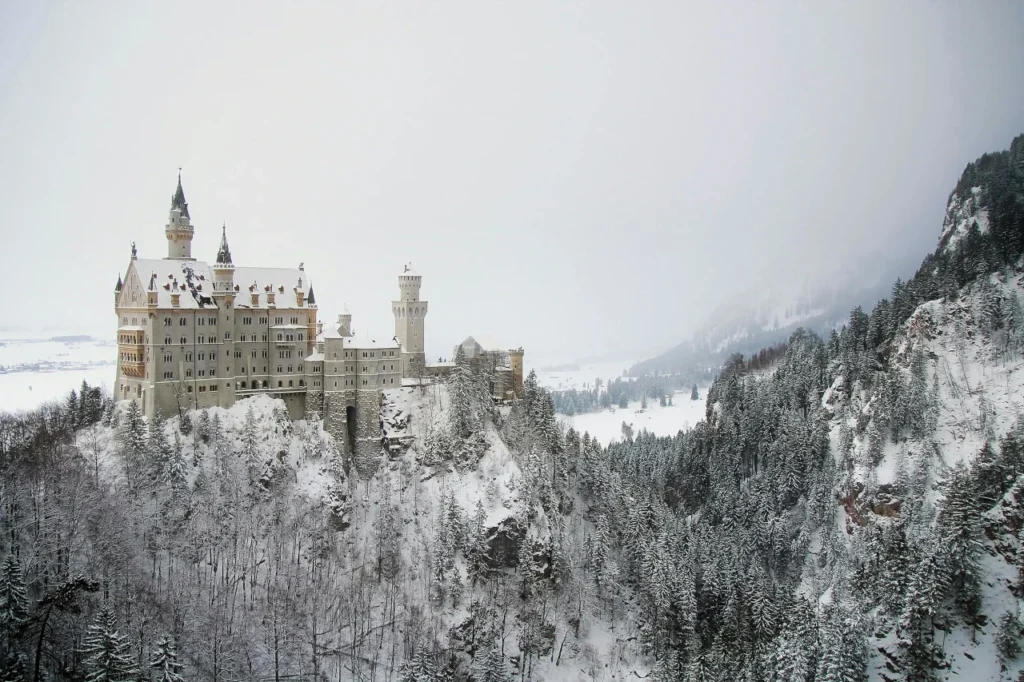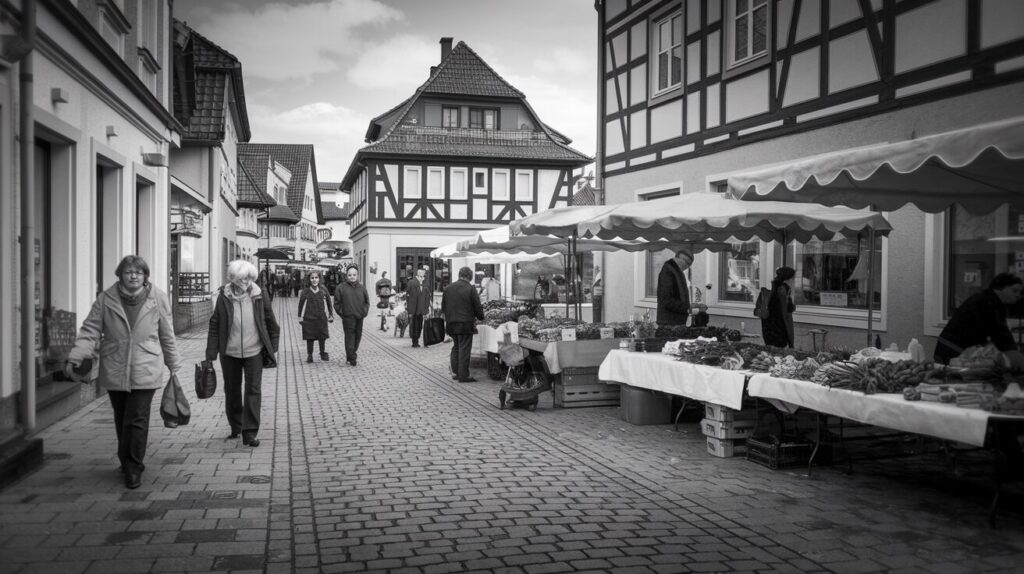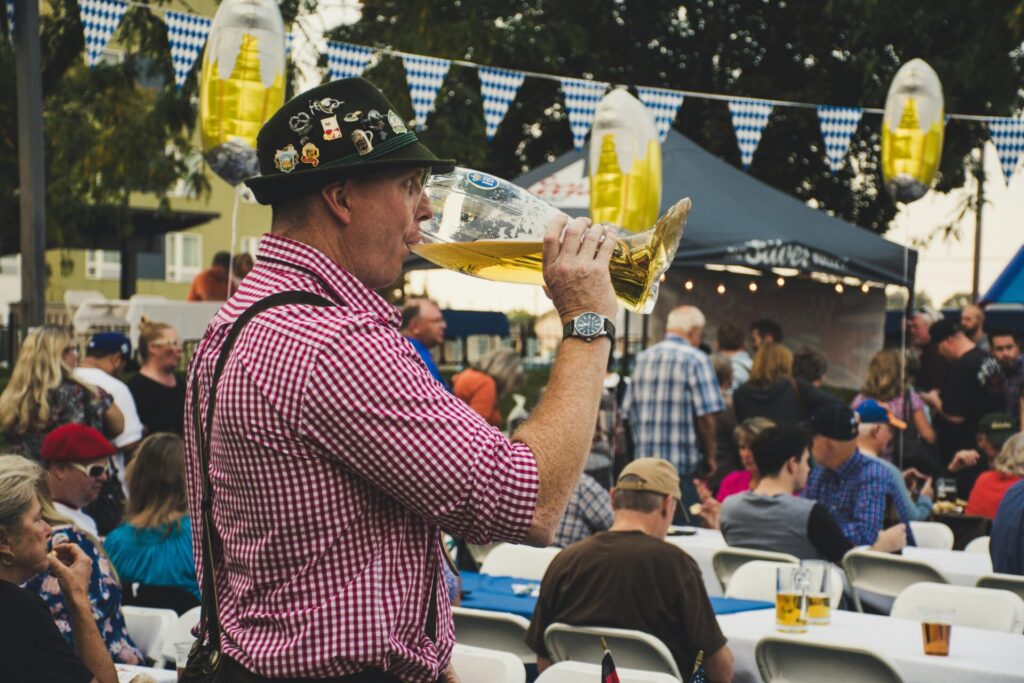More Than Just Beer and Bratwurst – A Journey into German Culture
Guten Tag, friends! Whether you’re planning your first trip to Germany, a proud German-American looking to reconnect with your roots, or just curious about the culture behind the beer steins and lederhosen, you’ve come to the right place. Germany is a land rich in history, breathtaking landscapes, and, most importantly, deeply cherished traditions. While clichés abound, the real heart of German culture lies in its customs, celebrations, and the unique way of life that has evolved over centuries.
Forget the stereotypes for a moment. We’re diving deeper than just Oktoberfest (though we’ll definitely get to that!). We’re going to explore the origins, meanings, and modern-day expressions of some of the most beloved German traditions. Get ready to unpack some Gemütlichkeit (that wonderfully untranslatable feeling of warmth, coziness, and belonging) and discover the magic behind these enduring customs. So grab a Kaffee und Kuchen (coffee and cake), settle in, and let’s explore the fascinating world of German traditions!
Section 1: Advent and Christmas: A Season of Light and Wonder
No discussion of German traditions would be complete without a deep dive into the Advent and Christmas season. For many, it’s the most magical time of year in Germany, a period filled with twinkling lights, festive markets, and heartwarming customs.
- Advent Calendars (Adventskalender): The anticipation begins on December 1st with the Adventskalender. These calendars, traditionally filled with chocolates or small toys, count down the days until Christmas Eve (Heiligabend). The tradition dates back to the 19th century, which started as a way for Protestant families to mark the days of Advent. Early versions involved hanging 24 pictures or lighting a candle each day. Today, you can find Advent calendars in every imaginable theme, from gourmet chocolates to beauty products. For German-Americans, the Adventskalender is often a cherished way to connect children with their heritage. If you’d like a deeper look at the history and types of advent calendars, check out my guide on German Advent Calendars.
- Advent Wreaths (Adventskranz): Another iconic symbol of the season is the Adventskranz, a wreath adorned with four candles. One candle is lit each Sunday in Advent, representing hope, peace, joy, and love. The tradition is attributed to Johann Hinrich Wichern, a Protestant pastor who ran a home for poor children in Hamburg. In 1839, he created a wooden ring with 24 candles (19 small red ones for the weekdays and 4 large white ones for Sundays) to help the children count down to Christmas. The modern Advent wreath, typically made of evergreen branches, is a beautiful and meaningful centerpiece for the Advent season.
- Christmas Markets (Weihnachtsmärkte): The Weihnachtsmärkte are perhaps the most famous German Christmas tradition. These festive markets, dating back to the Late Middle Ages, transform town squares into winter wonderlands. Stalls overflow with handcrafted ornaments, wooden toys, and delicious treats like Lebkuchen (gingerbread) and Glühwein (mulled wine), while the air is filled with the sounds of Christmas carols. Nuremberg’s Christkindlesmarkt is one of the most famous, but nearly every town in Germany has its own unique market. Wandering through a Christmas market is an experience for all the senses, and a must-do for anyone visiting Germany during the Advent season.
Of all the market specialties, Lebkuchen cookies hold a special place in German holiday baking. These spiced honey cookies were first made by monks in the 13th century and remain a beloved Christmas treat today. If you’d like to bring the flavor of the markets into your own kitchen, try this authentic Old World Lebkuchen recipe – a traditional blend of honey, nuts, candied peel, and warm spices that actually improves with age. - St. Nicholas Day (Nikolaustag): On December 6th, children eagerly await the arrival of Nikolaus (St. Nicholas). Children leave a boot or shoe outside their door on the evening of December 5th, and if they’ve been good, Nikolaus fills it with sweets, nuts, and small gifts. In some regions, Nikolaus is accompanied by Knecht Ruprecht, a somewhat menacing figure who carries a rod and punishes naughty children. The tradition is based on the historical Saint Nicholas of Myra, a 4th-century bishop known for his generosity and kindness.
- Christmas Eve (Heiligabend): In Germany, Christmas Eve is the most important day of the Christmas season. Families typically gather for a special meal, often featuring roast goose or carp. After dinner, the Bescherung (gift-giving) takes place. The Christmas tree, decorated with candles, ornaments, and tinsel, is revealed, and gifts are exchanged. Many families also attend a Christmas Eve church service.
- Christmas Day (Weihnachtstag) and Boxing Day (Zweiter Weihnachtstag): Christmas Day and Boxing Day are typically spent with family, enjoying festive meals and relaxing.



Section 2: Oktoberfest: More Than Just a Beer Festival
Oktoberfest! The name alone conjures images of overflowing beer steins, lively music, and people dressed in traditional Bavarian attire. While it’s certainly a celebration of beer, Oktoberfest is also a deeply rooted cultural tradition with a fascinating history.
- Origins: The first Oktoberfest was held in Munich in 1810 to celebrate the wedding of Crown Prince Ludwig (later King Ludwig I) and Princess Therese of Saxe-Hildburghausen. The festivities included horse races, agricultural shows, and, of course, plenty of beer. The event was so popular that it became an annual tradition.
- The Wiesn: Oktoberfest takes place on the Theresienwiese (Theresa’s Meadow), a large open space in Munich. Locals often refer to Oktoberfest simply as “die Wiesn.”
- The Tents: The heart of Oktoberfest is the beer tents, massive structures that can hold thousands of people. Each tent is run by a different Munich brewery and has its own unique atmosphere.
- Traditional Attire: Lederhosen (leather breeches) for men and Dirndls (traditional Bavarian dresses) for women are the quintessential Oktoberfest attire. While not mandatory, wearing traditional clothing adds to the festive atmosphere.
- More Than Just Beer: While beer is undoubtedly a central part of Oktoberfest, the festival also features amusement rides, food stalls, and traditional Bavarian music. It’s a celebration of Bavarian culture and a chance for people to come together and enjoy themselves.
Section 3: Karneval/Fasching: A Time for Merriment and Mayhem
Before the solemnity of Lent, Germany (particularly the Rhineland region) erupts in a riot of color and revelry during Karneval (also known as Fasching or Fastnacht). It’s a time for costumes, parades, and letting loose before the fasting season begins.
- Regional Variations: The celebrations vary from region to region. In Cologne, Düsseldorf, and Mainz, the Rosenmontag (Rose Monday) parade is the highlight of the festivities. In southern Germany, Fastnacht traditions often involve elaborate wooden masks and costumes.
- Costumes: Dressing up in costume is an essential part of Karneval. Anything goes, from silly and whimsical to elaborate and satirical.
- Parades: Parades are a central feature of Karneval, featuring floats, marching bands, and costumed revelers throwing candy and other treats to the crowds.
- “Helau” and “Alaaf”: Different regions have their own Karneval greetings. In Cologne, the traditional greeting is “Alaaf,” while in Düsseldorf, it’s “Helau.”
- Mock Governments: In some towns, Karneval celebrations involve the temporary establishment of a “mock government,” where Karneval societies take over the town hall and make fun of local politicians.
- Origins: Karneval has its roots in pre-Christian traditions, where people celebrated the end of winter and the coming of spring. Over time, the celebrations became associated with the Christian calendar and the period leading up to Lent.
Section 4: Easter (Ostern): More Than Just Bunnies and Eggs
While Easter is a Christian holiday celebrating the resurrection of Jesus Christ, many of the traditions associated with Easter in Germany have pagan origins.
- Easter Eggs (Ostereier): Decorating Easter eggs is a widespread tradition. Eggs are often dyed in vibrant colors and hidden for children to find. The egg is a symbol of new life and rebirth.
- Easter Bunny (Osterhase): The Easter Bunny is a popular figure in German Easter traditions. According to legend, the Easter Bunny hides the Easter eggs. The origin of the Easter Bunny is somewhat unclear, but it may be related to pagan symbols of fertility.
- Easter Fires (Osterfeuer): In many parts of Germany, Easter fires are lit on Easter Sunday. These fires are a symbol of the end of winter and the beginning of spring.
- Easter Walks (Osterspaziergang): Taking a walk on Easter Sunday is a popular tradition. It’s a chance to enjoy the spring weather and spend time with family.



Section 5: Other Notable German Traditions
Beyond the major holidays, Germany boasts a wealth of other fascinating traditions that are worth exploring.
- Maypole (Maibaum): In many villages, a Maibaum (Maypole) is erected on May 1st. The Maypole is a tall, decorated pole that symbolizes fertility and community.
- Schultüte (School Cone): On their first day of school, German children receive a Schultüte, a large cone filled with sweets, toys, and school supplies. It’s a way to make the transition to school a little easier and more exciting.
- Kaffee und Kuchen (Coffee and Cake): The tradition of enjoying coffee and cake in the afternoon is a beloved German custom. It’s a time to relax, socialize, and indulge in delicious treats. These afternoon coffee rituals are deeply connected to Germany’s rich bakery culture, where traditional family-owned bakeries serve as the heart of neighborhood life and daily routines.
- Abendbrot (Evening Bread): Abendbrot is a simple but satisfying evening meal consisting of bread, cheese, cold cuts, and pickles. It’s a common way to end the day in Germany.
- Prost! (Cheers!): Knowing how to properly toast is essential in German culture. “Prost!” is the standard German toast, accompanied by eye contact and a clinking of glasses.
- New Year’s Eve (Silvester): New Year’s Eve in Germany is celebrated with fireworks, parties, and traditional foods like Berliner (jelly-filled doughnuts) and Raclette.
Section 6: German Traditions in America: Keeping the Heritage Alive
For German-Americans, preserving and celebrating these traditions is a way to connect with their heritage and pass on their cultural identity to future generations. Many German-American communities host their own Oktoberfest celebrations, Christmas markets, and other cultural events. Family traditions, such as baking German Christmas cookies or decorating Easter eggs, are also important ways to keep the heritage alive.
Sharing these traditions with friends and neighbors is also a great way to promote cultural understanding and appreciation. Whether it’s hosting a German-themed dinner party or teaching your children a few German phrases, there are many ways to share the richness of German culture with others.
Conclusion: Embracing the Rich Tapestry of German Culture
From the twinkling lights of Christmas markets to the lively atmosphere of Oktoberfest, German traditions offer a glimpse into the heart and soul of a vibrant culture. These customs, passed down through generations, provide a sense of belonging, community, and connection to the past. Whether you’re German, German-American, or simply curious about the world, exploring these traditions is a rewarding and enriching experience.
So, the next time you raise a glass of Glühwein at a Christmas market or hear the oompah music of Oktoberfest, take a moment to appreciate the rich history and cultural significance behind these beloved German traditions. Auf Wiedersehen, and may your life be filled with Gemütlichkeit!



FAQ
I’m American and curious about German traditions. Which ones are still widely celebrated today?
That’s a great question! Many German traditions are still going strong. Some of the most popular include Oktoberfest (a beer festival celebrating Bavarian culture), Christmas markets (festive markets selling crafts, food, and drinks during Advent), Karneval/Fasching (a pre-Lenten carnival with parades and costumes), and Easter traditions involving egg hunts and bonfires. We also see celebrations of German Unity Day, which commemorates the reunification of Germany. These are just a few, and the specific traditions celebrated can vary by region.
As a German-American, I want to connect with my heritage. Where can I find information about the regional differences in German traditions?
German traditions can vary quite a bit from region to region. A good starting point is to research the specific region your family comes from (e.g., Bavaria, Rhineland, Saxony). You can find information on regional customs through online resources like Wikipedia (search for “[Region Name] Traditions”), specialized websites dedicated to German culture, and even contacting local German cultural centers or societies in your area. Libraries and historical societies can also be valuable resources.
I’ve heard about “Stammtisch.” What is it, and is it still common in Germany?
Yes, “Stammtisch” is still a common and cherished tradition in Germany! It refers to a regular, informal meeting of people at a pub or restaurant, usually on a specific day and time. It’s a chance to socialize, discuss local news, and build community. If you’re traveling to Germany, look for signs indicating a “Stammtisch” at local pubs, or ask around – it’s a great way to experience authentic German social life.
What are some common German Christmas traditions besides Christmas markets?
German Christmas traditions are rich and varied! Besides the markets, you’ll find Advent wreaths with candles lit each Sunday leading up to Christmas, the tradition of St. Nicholas visiting on December 6th to leave treats for good children, and the Christmas Eve feast, often featuring goose or carp. Many families also decorate Christmas trees with real candles (though electric lights are more common now!) and exchange gifts on Christmas Eve.
I’m planning a trip to Germany. Are there any etiquette tips related to participating in traditional celebrations?
Generally, Germans are very welcoming. Here are a few tips: Be punctual, especially for organized events. Learn a few basic German phrases like “Bitte” (please) and “Danke” (thank you). When toasting, make eye contact and say “Prost!” (Cheers!). If you’re invited to someone’s home, it’s polite to bring a small gift like flowers or chocolates. Most importantly, be respectful of the traditions and customs you’re observing. Enjoy your trip!
*You may also like: The Concept of Gemütlichkeit and Creating a Cozy German-Inspired Home




